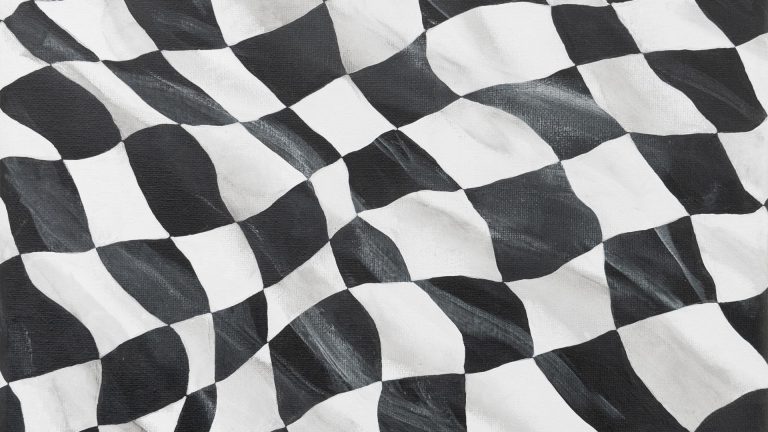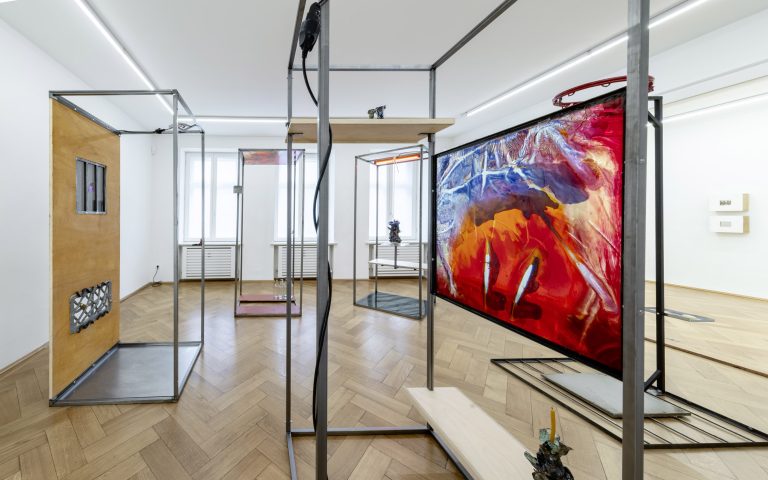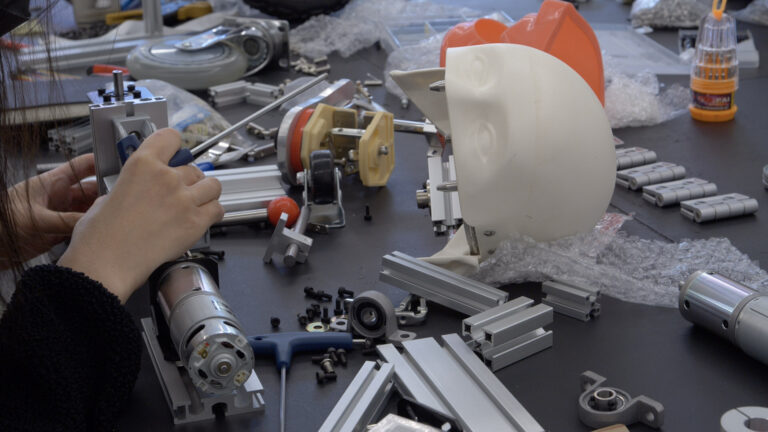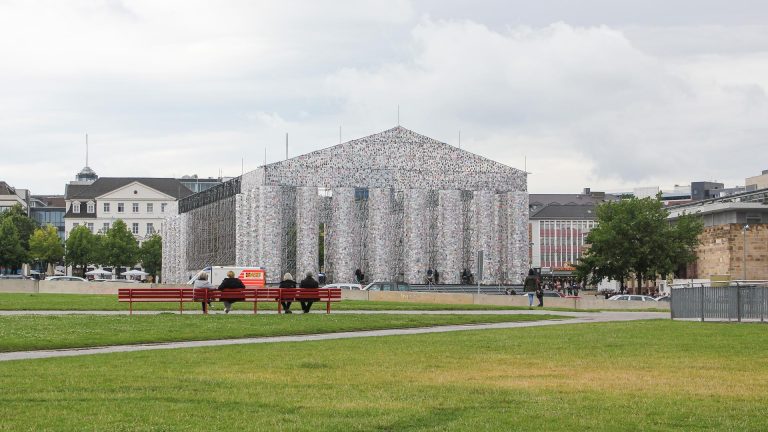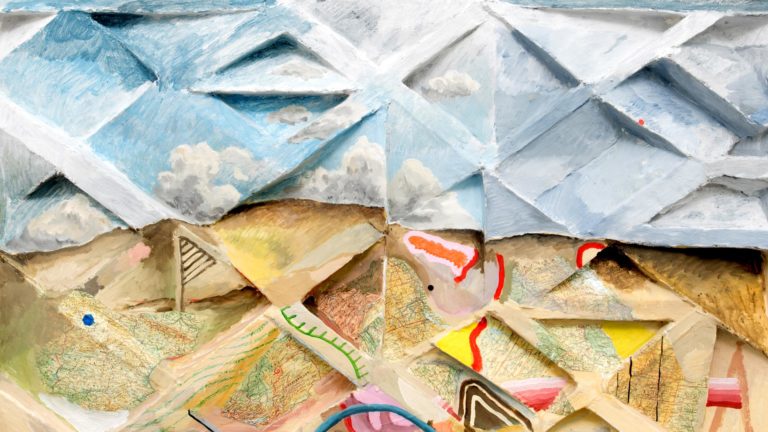Artists: Paula Flores, Bojana Fuzinato-Stamenkovic, Anneke Marie Huhn, Vera Klimentyeva, Isidora Krstic
Exhibition title: τραῦμα. Der Körper vergisst nicht
Venue: Kunstraum München, Munich, Germany
Date: September 11 – October 24, 2021
Photography: All images copyright of Thomas Splett and Kunstraum München
For the Munich art event VARIOUS OTHERS 2021, Kunstraum München presents Trauma. Der Körper vergisst nicht (“The body keeps the score”) – an exhibition about trauma, caused by war experiences, gender discrimination, xenophobia, violence and pandemics. The word trauma comes from the Greek and generally means injury (τραῦμα). Its causes are wide-ranging and its manifestations can run the gamut from the blatant to the nearly imperceptible. In all cases, the effect of trauma on an individual is catastrophic. Since last year, the trauma of the pandemic has been added to the mix, summoning to the surface all that we thought was buried and forgotten. The participating artists present multifaceted work developed in response to the concept of trauma, whether as personally affected or silent observers.
Since 2020, we have known a new trauma, that of the pandemic. Many people – especially young people, the elderly and singles – suffer from loneliness in this physically contactless time; psychological problems result from this. Seen in this light, we are looking back on at least 2000 years of violence, abuse, assault and oppression – in short: trauma. This is a fact that paralyzes our society and makes any developments and changes difficult.
“The body keeps the score”, writes Bessel van der Kolk. Even long after the traumatizing event, memories of it can suddenly haunt the affected person (latency and post-tolerance). Triggers are often certain situations or moods, places, faces, smells that bring the traumatic situation back into consciousness. This persistent alternation of avoidance and recollection (intrusion) is described by most researchers as a distressing trauma symptom.
In contemporary art, the treatment of these themes emerges regularly. Marina Abramovic, for example, sees artistic reappraisal as an opportunity to relive a personal trauma over and over again until it is completely overcome. The pain is basically part of the coping process. According to trauma therapists Luise Reddemann and Ulrich Sachsse, dissociation is then a mechanism of self-protection: the unbearable memories and images are split off again and again until those affected are sufficiently stable to deal with them.
The writer Chimamanda Ngozi Adiechi ultimately sees domestic violence as one of the main causes of political violence. And because this violence is taboo, she says, nothing changes in politics. Laurie Penny talks about the traumatized activists of the Occupy movement – often (male) young people without jobs, housing, perspectives – on whom we, the so-called open-minded society, put our hopes to slow down turbo-capitalism. But how can traumatized young people be expected to solve our accumulated problems?
The exhibition shows that there are hidden problems that inhibit the society from its further development. The visitors are invited to try to investigate in themselves as well as to look at their surroundings and their fellow human beings with different eyes.
Trauma is part of a travelling exhibition launched by curators Luciana Esqueda and Denise Parizek in 2019. Since then, analog shows and online projects have been realized around the themes of violence against women, LGBTQ1+ community, humanism, trauma, and exclusion.
The exhibition is a cooperation with the DG Kunstraum and is curated by Denise Parizek (12-14 contemporary, Vienna), Nina Holm (Kunstraum Munich) and Benita Meißner (DG Kunstraum).







































